Help with induction please
sherri1058
9 years ago
Featured Answer
Sort by:Oldest
Comments (32)
sherri1058
9 years agoRelated Discussions
Bosch 800 induction owners - help, please...
Comments (9)Thanks, guys - think it is definitely an issue with the unit. The repair guy from the appliance store that came out to inspect the install (he didn't do it) was on the phone with Bosch and went through every possible scenario (and some impossible ones) to diagnose the problem. It's definitely with the unit itself, not the installation. I just wanted to make sure the normal operation to select burners requires a light touch, not a heavy hand... We're getting a new unit soon - fingers crossed this one is a keeper....See MorePlease Help me with Electric/ Induction Wolf range Alternative!
Comments (28)Propane tanks are only filled to 70% max. Daily household usage is minimal (vs using propane for the type of backup generator we have that uses a gallon per hour). You pay more for the gas due to low usage but it should not be prohibitive. Alternately, induction cooktops that are highly regarded include Miele, Wolf and Bosch. Thermador has a very beautiful one. I was researching them for a possible retrofit. The downside of induction, depending on the cooktop, is losing space below -- I have a high usage utensil drawer there. Also induction-friendly cookware is required. But those who have them seem to love them. My girlfriend got an Electrolux induction range and loves it. You might take a look at that. The induction site has the most technical info in one place. Here is a link that might be useful: The Induction Site...See MorePlease help me make a induction cooktop decision
Comments (49)So you are saying that the auto shutoff of which you and the others on this thread are talking about is the feature whereby a hob with a pot on it and the heat turned on will shut itself off after a prescribed period of time at a specific heat level? And it does so when it reaches, say,ten hours? Or eleven? Yes, we are saying that. Because we downloaded and read the manual for the Bosch induction cooktop, and that's what it said. And you dismiss my definition where the hob shuts off simply because it is empty of a pot? You donot consider my scenario as a or the true definitation of auto shutoff? I look forward to simple answers. Nobody is dismissing your definition. As Chanop said, you are correct as well. When you pull the pan off the burner, it will shut off. This is true of all induction cooktops. However, some induction cooktops will automatically shut off after a certain amount of time with a burner on, and a pan present, without anybody touching the controls. This is not voodoo. None of us are guessing or speculating about how the auto shut off works. All of this information is laid out clear as day in the manual, freely available online....See MorePlease help - Wolf versus Miele ovens and induction cooktop
Comments (12)Thank you so much everyone for your great advice. We have been agonizing over this for too long. For the Wolf v. Miele 36 inch induction cooktop, the Miele definitely seems to have more functionality. But it seems maybe Wolf is easier to use with the touch controls versus number touch controls on the Miele? Also, this may be silly, but the Miele in straight black seems to show more fingerprints. Also Wolf now has a new 36 inch transitional induction cooktop with silver rim with what looks like more a charcoal grey surface rather thank straight black (it is black with a lot of dots so looks more grey). I know silly to rely just on aesthetics though but we are having an all white kitchen and the lighter color cooktop would be nice but maybe still really looks dark or maybe can’t even really see the cooktop when in the kitchen and not really in front of it. So there are all those considerations. What do you think? Still go with Miele? Another consideration is qualifying for a package. Whatever we pick for the induction cooktop plus oven qualifies us either for $1000 rebate from Subzero-Wolf (with fridge/freezer) or 10 percent discount off Miele. So if go with Wolf induction, then need 1 Wolf oven. We plan to stack a regular oven with combi steam so that means then Wolf oven and Wolf steam oven but it does seem that Miele has a much better combi steam. Could do the Miele induction cooktop, Miele combi-steam, and Miele oven, but have the issues with the cooktop described above. And from a silly aesthetic perspective, we prefer the Subzero-Wolf professional look, but silly to base appliance selections on look. What do you think? Worth it to go all Miele for ovens and induction? Or is the Wolf sufficient and get the look? Some people really like the M Wolf oven (apparently fixed chipping issues or made easier to replace) but bad not to have convection bake and convection broil? Then E might be better because has both but then lose the Wolf gourmet features and maybe chipping issue. Re Wolf steam some people really like it and a new model looks better but maybe mostly improvements with facade. Go with all Miele? Ok to have Miele contourline clean touch stainless ovens and induction in all white more traditional kitchen (white shaker cabinets and white silestone counters)? And ok to mix with Subzero built-in fridge/freezer and Wolf low profile wall hood? Soo very much appreciate your feedback. Thank you!!!...See Moresherri1058
9 years agoplllog
9 years agosherri1058
9 years agosherri1058
9 years agosherri1058
9 years agosherri1058
9 years agosherri1058
9 years agosherri1058
9 years ago
Related Stories
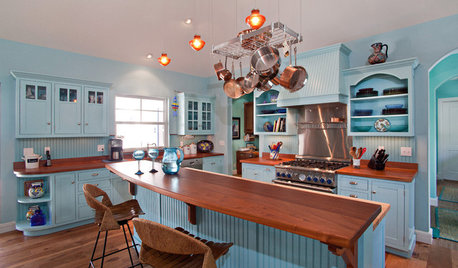
KITCHEN DESIGNHere's Help for Your Next Appliance Shopping Trip
It may be time to think about your appliances in a new way. These guides can help you set up your kitchen for how you like to cook
Full Story
HOME OFFICESQuiet, Please! How to Cut Noise Pollution at Home
Leaf blowers, trucks or noisy neighbors driving you berserk? These sound-reduction strategies can help you hush things up
Full Story
GARDENING GUIDESGreat Design Plant: Ceanothus Pleases With Nectar and Fragrant Blooms
West Coast natives: The blue flowers of drought-tolerant ceanothus draw the eye and help support local wildlife too
Full Story
GARDENING GUIDESGreat Design Plant: Silphium Perfoliatum Pleases Wildlife
Cup plant provides structure, cover, food and water to help attract and sustain wildlife in the eastern North American garden
Full Story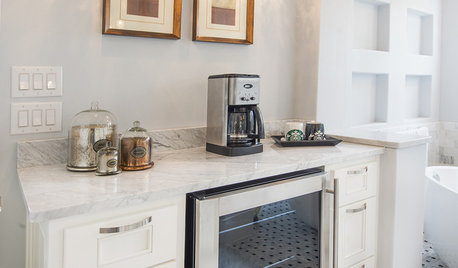
BATHROOM DESIGNUpload of the Day: A Mini Fridge in the Master Bathroom? Yes, Please!
Talk about convenience. Better yet, get it yourself after being inspired by this Texas bath
Full Story
DECORATING GUIDES10 Bedroom Design Ideas to Please Him and Her
Blend colors and styles to create a harmonious sanctuary for two, using these examples and tips
Full Story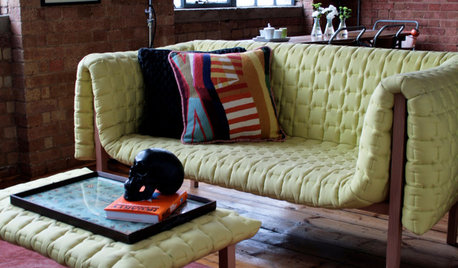
DECORATING GUIDESPlease Touch: Texture Makes Rooms Spring to Life
Great design stimulates all the senses, including touch. Check out these great uses of texture, then let your fingers do the walking
Full Story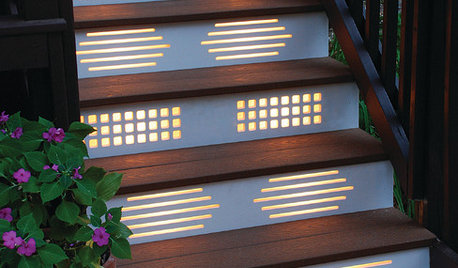
GARDENING AND LANDSCAPINGNo Fall Guys, Please: Ideas for Lighting Your Outdoor Steps
Safety and beauty go hand in hand when you light landscape stairways and steps with just the right mix
Full Story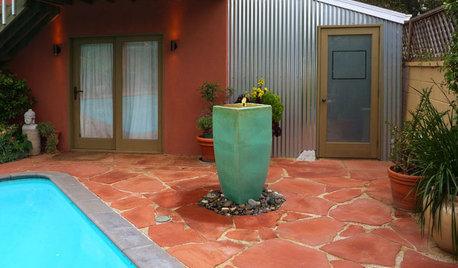
BEFORE AND AFTERSMore Room, Please: 5 Spectacularly Converted Garages
Design — and the desire for more space — turns humble garages into gracious living rooms
Full Story



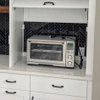

sjhockeyfan325